In Chamonix, green science tourism on the side of Mont Blanc
In this mountain town, one in three people make their living from tourism. Faced with the rapid change in the Alpine ecosystem, local actors are thinking about more eco-responsible initiatives.
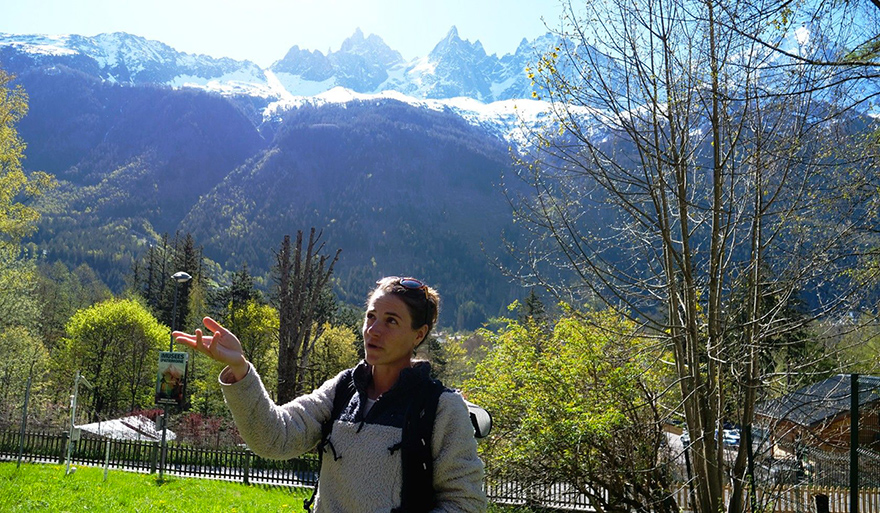
Chamonix-Mont-Blanc (France)
Chamonix, nine o'clock. The first light of the day makes the powder snow glisten on the mountains. As we descend the winding path to the Mont Blanc Observatory, we can clearly see the highest peak in Europe. At the end of the path, bare of snow with the arrival of spring, there is an energetic handshake. "I never kiss – it’s an American habit," laughs Hillary Gerardi.
Hillary arrived in France eleven years ago. Initially based in Grenoble, this researcher and high-level athlete was attracted by the wide open spaces of Chamonix. She moved there in 2017, to join the Mont-Blanc team at CREA (Centre de Recherches sur les Ecosystèmes d'Altitude).
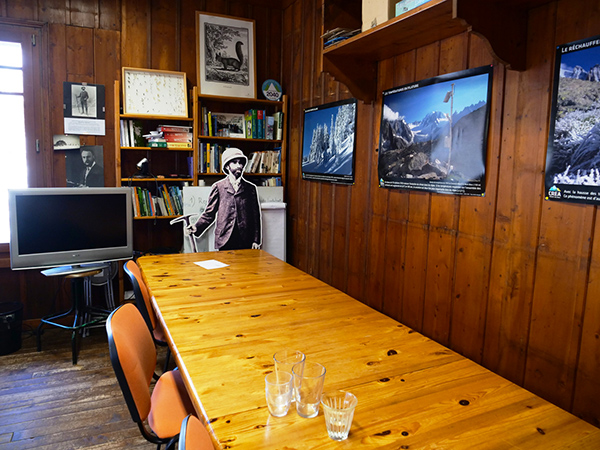
This NGO was founded twenty-six years ago. Its mission is to study the impact of climate change in the Alps, but it also raises awareness among the local population and tourists.
CREA is based in the Mont Blanc Observatory chalet, a listed building built by the mountaineer and explorer Joseph Vallot. He designed this orange-tinted wooden hut in the 1880s as a base camp for scientists from all over the world.
Climate change twice as fast as elsewhere
As the only research centre in the Chamonix valley, the site is now popular with researchers for observing climate change. "It's really interesting to look at this here, because climate change is twice as fast on Mont Blanc as elsewhere," says the researcher.
At 4810 metres, Mont Blanc has the highest altitude gradient in Europe. The temperature difference between the valley and the peak is so great that to study all the mountain's ecosystems is like analysing a diversity of environments from the Mediterranean to the North Pole. "We are lucky to have such a rich study site. We need to set an example in adapting to climate change, but also in our approach to the Chamonix valley," adds Hillary.
To change the public's image of the Chamonix Mont-Blanc area, CREA launched the TourScience project in 2014. This cross-border project is financed by the European Union's ERDF-Alcotra funds. Its primary objective was to create scientific-tourism options for the general public.
"Tourists may be looking for something other than sports"
"The link between the CREA and tourism is not necessarily obvious", admits Célia Bonnet-Ligeon, the TourScience project manager. "We decided that the tourists in Chamonix might want something other than just sporting performance."
During the first years of TourScience, scientific stays were offered to students from abroad. After the Covid-19 pandemic, which stopped all trips, the project refocused on a more informed audience of academics.
Now that global warming is common knowledge, TourScience aims to raise awareness about biodiversity. "It's a less familiar topic, so we're trying to show how humans are one species among others in the ecosystem," explains Célia.
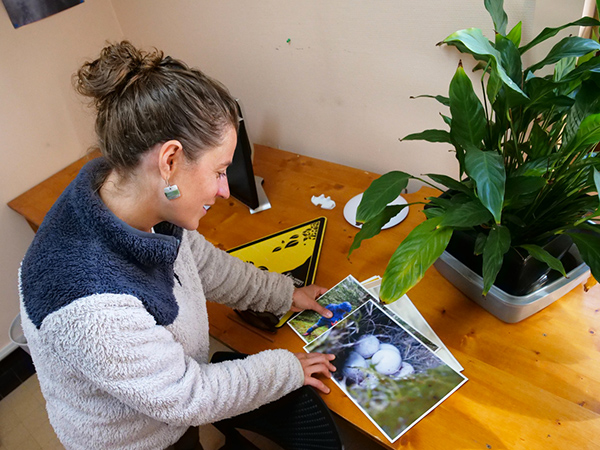
The CREA has developed scientific protocols based on observation. The idea is to reconnect people with nature. "When we ask students to sit on the ground and note down all the insects that pass by for five minutes, they are initially baffled," smiles the project leader. "This allows them to see their disconnection with this planet that they mostly watch on screens," she continues.
This year, the TourScience project has been extended to explore new tourism opportunities for Chamonix. "Our real question today is how to make all this sustainable," says Célia.
A vital issue for the local economy
In the Haute-Savoie district, where tourism accounts for one in three jobs, the transformation of the sector is a vital issue for the local economy. "We don't necessarily want to change the amount of time tourists spend here, but rather their approach to their stay," adds Hillary Gerardi.
Driving along one of the roads leading into the city centre, it's hard to miss the square of St Michael's Church. The white stone building is surrounded by daffodils and tulips. It is a riot of sunny hues. This spring, they have bloomed earlier.
Olivier Greber waits patiently in front of the office of the Guides de Haute Montagne. He has been the association's president since 2019. With its 240 guides and created in 1821, it is the largest and oldest of its type in the world.
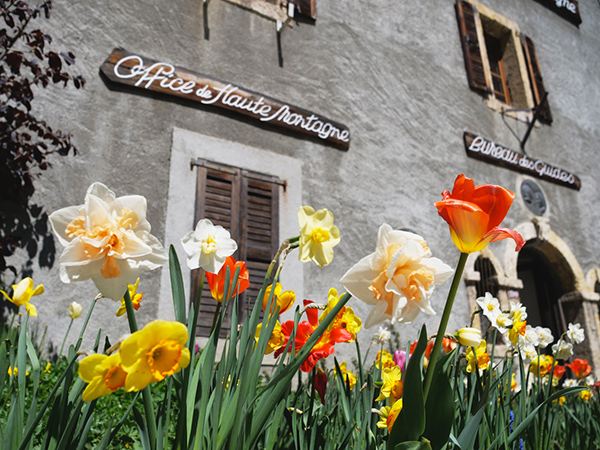
Over the years, Olivier Greber has seen the area around Chamonix change. "We have all seen the glaciers change with the seasons. The Montenvers stairs, at the end of the Mer de Glace, used to have 20 steps... Now there are 1500," he says ruefully.
An evolution driven by the general public
On the occasion of the bicentenary of the Guides last year, the institution began to think about adapting the profession to global warming. The impetus for this came first from the public. "The question of the environment comes up very often with our clients. We are obliged to have a minimum of expertise on the subject", says the adventurer.
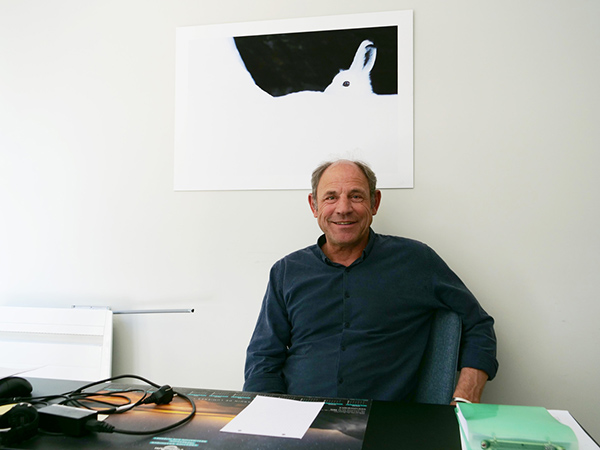
Chamonix is a small world. All the players in the tourism industry know each other and work together. Some even wear several hats, like the guides who take part in the CREA Mont-Blanc research. "It's quite logical", explains Olivier. "The first reasons for climbing Mont Blanc in 1786 were scientific [...]. There has always been a strong link between science and mountaineering."
Chamonix, a land of mountain lovers
Forty years ago, the Alps inspired Olivier Greber's vocation. His eyes light up when he thinks back to the beginning. "I have been doing this since the 1980s [...]. I love my job. I wouldn't have done it any other way".
Like him, every resident of "Cham’" has an intimate link with Mont Blanc. In the years to come, they all intend to work to preserve every bit of this fragile and beautiful landscape.
 This article was produced as part of the Union Is Strength competition, organised by Slate.fr with the financial support of the European Union. The article reflects the views of the author and the European Commission cannot be held responsible for its content or use.
This article was produced as part of the Union Is Strength competition, organised by Slate.fr with the financial support of the European Union. The article reflects the views of the author and the European Commission cannot be held responsible for its content or use.